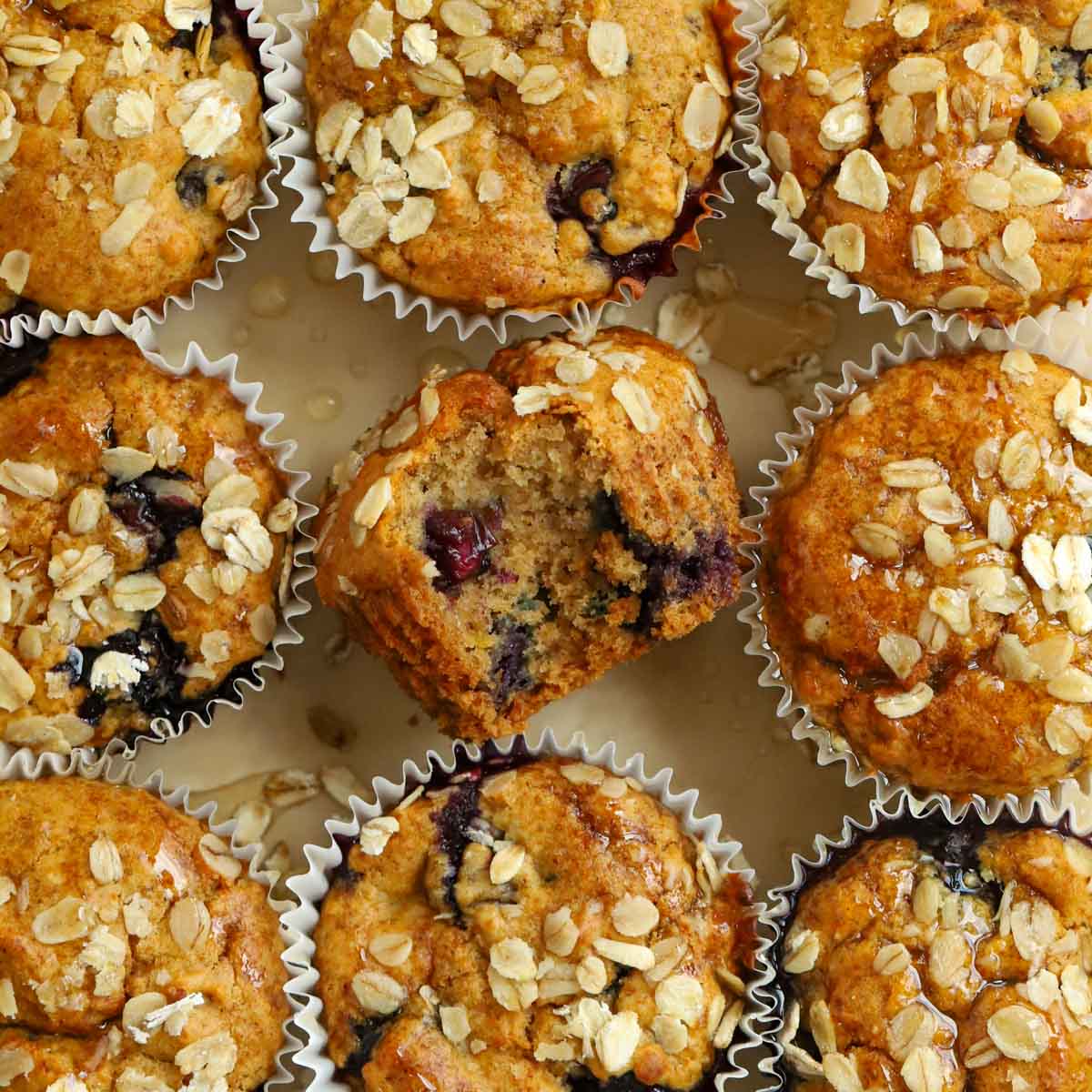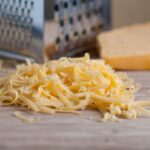Imagine sinking your teeth into a cloud-like muffin, bursting with flavor and surprisingly dairy-free. This isn’t your average breakfast treat; it’s a revelation. Fluffy, moist, and adaptable to countless dietary needs, these muffins redefine the morning meal, offering a delightful experience that’s both healthy and incredibly satisfying. Prepare to embark on a culinary journey where taste and texture intertwine to create a breakfast that’s truly better.
This recipe provides a detailed guide to crafting these exceptional dairy-free muffins, from selecting the perfect ingredients and mastering the baking process to exploring creative serving suggestions and flavor variations. We’ll delve into ingredient substitutions for gluten-free and vegan diets, ensuring everyone can enjoy this delightful breakfast experience. We’ll also address common baking challenges and provide solutions for achieving perfectly fluffy muffins every time. Get ready to elevate your breakfast game!
Recipe Development & Ingredients

These fluffy dairy-free muffins represent a delicious and healthy upgrade to your typical breakfast routine. The recipe prioritizes wholesome ingredients and offers flexibility for various dietary needs, ensuring everyone can enjoy a delightful and nutritious start to their day. We’ve focused on achieving a light, airy texture and a subtly sweet flavor profile, avoiding overly processed ingredients or excessive sugar.
The development of this recipe involved extensive experimentation to achieve the perfect balance of fluffiness and moisture without relying on dairy products. Several iterations were tested, adjusting baking powder and liquid ratios to obtain the desired texture. The final recipe incorporates a blend of plant-based milks and oils to create a moist crumb, while applesauce contributes to both moisture and sweetness, reducing the need for refined sugars.
Dairy-Free Muffin Recipe
This recipe yields approximately 12 standard-sized muffins. Adjust baking time depending on your oven and muffin tin.
Ingredients:
- 1 ½ cups all-purpose flour (or gluten-free blend for gluten-free option)
- ¾ cup granulated sugar (or maple syrup/coconut sugar for reduced refined sugar)
- 2 teaspoons baking powder
- ½ teaspoon baking soda
- ¼ teaspoon salt
- 1 teaspoon vanilla extract
- 1 cup unsweetened applesauce
- ½ cup plant-based milk (almond, soy, oat, etc.)
- ¼ cup vegetable oil (or melted coconut oil for coconut flavor)
- 1 tablespoon apple cider vinegar (helps activate baking soda)
- Optional: ½ cup blueberries, chocolate chips, or other mix-ins
Instructions:
- Preheat oven to 375°F (190°C). Line a muffin tin with paper liners.
- In a large bowl, whisk together flour, sugar, baking powder, baking soda, and salt.
- In a separate bowl, combine applesauce, plant-based milk, oil, vanilla extract, and apple cider vinegar.
- Pour the wet ingredients into the dry ingredients and gently mix until just combined. Do not overmix.
- Fold in any desired mix-ins.
- Fill each muffin liner about ¾ full.
- Bake for 18-20 minutes, or until a toothpick inserted into the center comes out clean.
- Let the muffins cool in the tin for a few minutes before transferring them to a wire rack to cool completely.
Nutritional Comparison
The following table compares the approximate nutritional information per muffin of our dairy-free recipe with a traditional dairy-containing recipe. Values are estimates and may vary based on specific ingredients used.
| Nutrient | Dairy-Free Muffin | Traditional Muffin | % Daily Value (Dairy-Free) (Approximation) |
|---|---|---|---|
| Calories | 150-180 | 170-200 | 7-9% |
| Protein (grams) | 3-4 | 4-5 | 6-8% |
| Fiber (grams) | 2-3 | 1-2 | 8-12% |
| Fat (grams) | 6-8 | 8-10 | 9-12% |
Texture and Flavor Profile
These dairy-free muffins boast a remarkably light and fluffy texture, achieved through careful ingredient selection and mixing techniques. The applesauce contributes to a moist crumb that’s tender yet not dense. The subtle sweetness, derived from a combination of sugar and applesauce, avoids an overly sugary taste, creating a balanced flavor profile that complements the inherent taste of the flour and any added mix-ins. The muffins offer a healthier alternative to many breakfast pastries, providing a satisfying and nutritious start to the day without the heaviness or guilt often associated with traditional breakfast options. The texture is superior because it avoids the dryness often found in dairy-free baked goods, while the flavor profile is more refined and less artificially sweet than many commercially available muffins.
Step-by-Step Baking Process
Creating these fluffy dairy-free muffins is a straightforward process, even for novice bakers. The following steps, coupled with visual descriptions, will guide you through each stage, ensuring a perfect batch every time. Remember to preheat your oven to 375°F (190°C) before you begin.
First, we’ll focus on combining the wet ingredients. Imagine a large mixing bowl, its gleaming sides reflecting the sunlight as you gently pour in the dairy-free milk alternative – perhaps creamy oat milk or subtly sweet almond milk. Next, add the melted coconut oil, its golden hue contrasting beautifully with the paler milk. A touch of apple cider vinegar adds a subtle tang, while the vanilla extract contributes a warm, inviting aroma. Using a whisk, you’ll create a smooth, homogenous mixture, the ingredients swirling together in a creamy, light dance. A picture would show the bowl, filled about halfway, with a whisk creating light swirls in the pale liquid, the coconut oil barely visible but contributing to the glossy sheen.
Wet and Dry Ingredient Combination
Now, let’s turn our attention to the dry ingredients. In a separate bowl, you’ll see a cloud of flour, baking powder, baking soda, and a pinch of salt. The flour is light and airy, almost ethereal in its texture. The baking powder and soda, tiny white granules, promise a light and fluffy texture. The picture would show this bowl, full of the light-colored dry ingredients, ready for incorporation. Gently whisk these dry ingredients together to ensure even distribution. This prevents pockets of baking powder from creating uneven rising.
The next step involves carefully folding the dry ingredients into the wet ingredients. Imagine a slow, deliberate motion, a gentle incorporation, preventing the batter from becoming dense. A spatula, moving in a circular motion from the bottom up, ensures even distribution. The picture would capture this process, showcasing the careful folding, the batter gradually transforming into a smooth, slightly thick consistency. Avoid overmixing, as this can lead to tough muffins.
Filling the Muffin Tins
Next, prepare your muffin tin. Line it with paper liners, their vibrant colors adding a cheerful touch to the process. Alternatively, you can grease the tin generously with oil or baking spray. Using a spoon or ice cream scoop, carefully fill each muffin cup about two-thirds full. The picture would display the filled muffin tin, the batter sitting evenly in each cup, ready for baking. Ensure the batter is distributed evenly to promote uniform baking and size.
Baking and Alternative Methods
Place the muffin tin in the preheated oven. Baking time typically ranges from 18-22 minutes. However, this can vary based on your oven and the type of muffin tin used. A toothpick inserted into the center of a muffin should come out clean when they’re done. A picture would show the muffins baking, the tops beginning to turn golden brown. The steam escaping from the oven door would add to the visual appeal.
For convection ovens, reduce the baking temperature by 25°F (15°C) and reduce the baking time by approximately 5 minutes. The increased air circulation in a convection oven results in faster and more even cooking. For ovens known to bake unevenly, rotating the muffin tin halfway through the baking process ensures even browning. This would be illustrated by a picture of the oven, with the muffin tin being carefully rotated.
Troubleshooting Common Baking Issues
Several factors can affect the outcome of your muffins. Addressing these common issues proactively ensures successful baking.
- Muffins sinking: This often occurs due to underbaking or insufficient leavening agents. Ensure the muffins are fully baked before removing them from the oven. Double-check the expiration dates on your baking powder and soda.
- Uneven browning: This is often caused by uneven oven heat distribution. Rotate the muffin tin halfway through baking or use a baking sheet to create a more even heat distribution.
- Dry texture: Overbaking is the most common culprit. Check the muffins frequently towards the end of the baking time. Using slightly less liquid than the recipe calls for can also lead to dryness.
Recipe Refinement & Feedback
The journey of creating the perfect dairy-free fluffy muffin doesn’t end with a successful first bake. Continuous improvement, guided by user feedback, is crucial to refining the recipe and ensuring it delights a wide range of palates and skill levels. This iterative process involves actively seeking feedback, analyzing the results, and making targeted adjustments to optimize taste, texture, and ease of preparation.
Gathering feedback on the recipe will be a multi-pronged approach designed to capture a broad spectrum of opinions. This ensures the recipe resonates with a diverse audience and reflects the needs and preferences of different bakers.
Feedback Collection Methods
A comprehensive feedback strategy will employ several methods to ensure a diverse and representative sample of opinions. We will utilize a combination of online and offline methods to maximize reach and engagement. This multifaceted approach allows for a richer understanding of user experiences and preferences. Specifically, we will implement an online survey hosted on a popular platform like SurveyMonkey or Google Forms, a dedicated comment section on the recipe’s publication page (e.g., a blog or website), and a simple star rating system (1-5 stars) to quickly gauge overall satisfaction. The survey will include specific questions about taste (e.g., sweetness, overall flavor profile), texture (e.g., fluffiness, moistness, crumb structure), and ease of preparation (e.g., clarity of instructions, time commitment, ingredient availability). The comment section will allow for more detailed, qualitative feedback, capturing nuanced opinions and suggestions for improvement. The star rating system offers a quick and easy way for users to provide an immediate overall assessment. This three-pronged approach allows us to collect both quantitative and qualitative data, providing a holistic view of user experiences.
Iterative Recipe Refinement
Analyzing the collected feedback will involve identifying recurring themes and patterns. For instance, if multiple users report the muffins being too sweet, we might reduce the sugar content in the next iteration. Similarly, if the instructions are deemed unclear, we’ll rewrite them to be more concise and user-friendly. We will prioritize feedback related to taste, texture, and ease of preparation, focusing on adjustments that address the most prevalent concerns. For example, if many users report a dry texture, we might increase the amount of liquid or add an additional moistening agent. Each iteration will be rigorously tested and documented, tracking changes made and the resulting impact on the overall quality of the muffins. This meticulous approach ensures a continuous improvement cycle, leading to a refined and user-friendly recipe. We anticipate needing at least two to three iterations to fully optimize the recipe based on user feedback, mirroring the refinement process used for other successful baking recipes where iterative adjustments based on user testing are common practice.
Example of Recipe Adjustment
Imagine a scenario where user feedback consistently indicates the muffins are too dense. Analysis reveals a common thread: the baking powder might be insufficient to achieve the desired lift. In response, we would increase the amount of baking powder slightly, retest the recipe, and re-evaluate the texture. This adjustment might also involve testing different brands of baking powder to ensure consistent results across various baking environments. We would then document this change, noting the initial problem, the implemented solution, and the observed improvements in the muffin’s texture. This detailed documentation is essential for maintaining transparency and for future recipe development.
From the initial mixing of ingredients to the golden-brown perfection of the finished product, creating these dairy-free muffins is a journey of culinary discovery. The result? A breakfast that’s not just delicious but also adaptable, healthy, and incredibly versatile. Whether enjoyed plain, paired with fresh fruit, or transformed into exciting flavor variations, these muffins promise a delightful start to any day. So, gather your ingredients, embrace the process, and prepare to experience breakfast redefined.
Popular Questions
Can I use different types of flour in this recipe?
Yes, you can experiment with various gluten-free flour blends or alternative flours like almond flour or oat flour. Adjust the liquid accordingly, as different flours absorb liquid differently.
How long can I store these muffins?
Store the muffins in an airtight container at room temperature for up to 3 days or in the refrigerator for up to a week. You can also freeze them for longer storage.
What if my muffins are too dry?
Next time, add a tablespoon or two more of your chosen milk alternative. Ensure your oven temperature is accurate, as too high a temperature can dry out muffins quickly.
Can I make these muffins ahead of time?
Absolutely! You can prepare the batter the night before and bake them in the morning. Store the prepared batter in the refrigerator until ready to bake.


